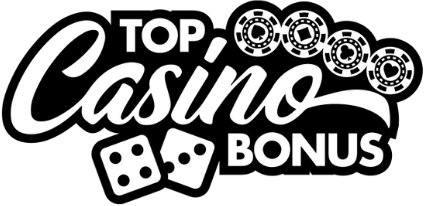Mini roulette and other interesting roulette variations
Most players who dabble in roulette stick to the standard wheels, European or American, and never wander beyond those lines. That’s like calling yourself a craftsman after using nothing but a hammer and a single kind of nail. Variations like mini roulette have their own ecosystem of odds, pace, and quirks. You can’t treat them like their larger cousins, or you’ll walk straight into traps that empty your wallet faster than a split bet on a cold wheel.
Table of contents
Understanding the mechanics of mini roulette
Mini roulette, for all its simplicity, demands respect. You’re looking at a 13-pocket wheel, going from numbers 0 to 12. At first glance, it seems innocent, fewer numbers, easier bets, tighter spins. But what many up-and-comers miss is that the house edge can get sharp if you’re not tuned in. The single zero setup might suggest it’s more generous than American roulette, but don’t be fooled, some versions don’t apply the La Partage rule, which spikes that edge over 7%.
Why seasoned players approach differently
When I sit at a mini roulette table, I treat it like choosing the right chisel for delicate woodwork. I don’t bring the same techniques I’d use on a full wheel. The ratio of spaces fundamentally warps probability dynamics. A common mistake, especially for newer players, is relying on betting systems built for 37 or 38 pockets. That’s gambling blind. If you’re planning to dig deeper into these missteps, check this primer on common roulette mistakes. It’ll clear up what many refuse to learn until it’s too late.
French and European roulette: The gold standards
You can’t discuss roulette variations without tipping your hat to the originals. European roulette, with 37 pockets and a single zero, is the cornerstone. French roulette is similar but includes elegant refinements like En Prison and La Partage. These aren’t just ornamental, they slice the house edge in half, down to 1.35% on even-money bets. That’s as good as the tables get without skewing into fantasy.
The elegance of traditional rules
When you’ve been around long enough, you begin to appreciate the balance French roulette offers. Some of the newer developers, like Yggdrasil’s roulette designs, do a solid job replicating this sophistication for digital play. But I’ve seen too many software attempts take liberties with tradition just to jazz up something that was already refined. Don’t be distracted by shiny lights and techno loops. Stick to the wheels that treat your bankroll with the same precision you give your craft.
American roulette: A double-zero lesson in caution
The biggest rookie mistake? Thinking extra zeros mean extra fun. America’s double-zero wheel adds beef, but not consistency. That little shift from 37 to 38 pockets kicks the house edge from 2.7% to 5.26%. You’d have to be either asleep or too proud to notice the extra drag it places on long-term returns. It’s tolerable for quick sessions, but not where you build discipline or a bankroll.
Identifying wheel structure at a glance
I spot an American wheel in seconds, it sings a different tune. The spacing of reds and blacks, the positioning of the zeros… all signs point to a tougher ride. It’s the kind of wheel where you better tighten every bolt in your strategy. Developers like WMS tend to bolt this style onto some of their top-tier games. They make it tempting, but don’t let visuals cloud your judgment. Always read the paytable like a blueprint before you commit a single unit.
Multi-wheel and multi-ball roulette: High drama, higher risk
I’ve watched smart players let greed devour them at these tables. Playing multiple wheels simultaneously or having multiple balls on a single spin may sound like sweet music to the impatient, but each added component multiplies complexity. The house loves when you lose track of probabilities, because odds stacked on top of odds just stack losses if you’re not surgical in your approach.
Learning to pace the chaos
This isn’t a sprint. Never was. Loading yourself with extra wheels or balls is like trying to run a forge while blindfolded. Sure, spectacle can be fun. And yes, modern developers like Red Tiger Gaming wrap these variants in stunning visuals. But in my experience, if your primary goal is consistent profit, avoid letting spectacle dictate your tactical choices.
Mini roulette in the digital age
In the online environment, mini roulette has carved out a niche. It appeals to mobile users and those who prefer rapid decisions and lighter bankrolls. But don’t confuse simplicity with softness. Some versions lack even split-zero rules, jacking up long-term loss rates. I usually recommend players chase this variant only on verified, fair-balance platforms, preferably those that allow adjustable limits and clear house percentage displays.
The danger of ignoring game details
Many novices don’t check version rules before jumping in. Thunderkick, for example, puts clever design and strong math behind their games, which includes roulette variants. That kind of craftsmanship you can work with. But get lazy and play random lobby entries without vetting the software creator… you’re playing with raw iron, full of impurities. Maybe it shines, but it won’t last.
Final thoughts: It’s not about more, it’s about better
If there’s one piece of advice that’s withstood the test of time, it’s this, don’t mistake flash for value. Mini roulette and the many other variations out there each serve a purpose, but only if used with foresight. Anyone can light up a wheel and call it entertainment. But actual success, like forging strong steel, comes from discipline, understanding, and choosing the right tool for the task. Your wheel is your workspace. Know it well.





0 Comments